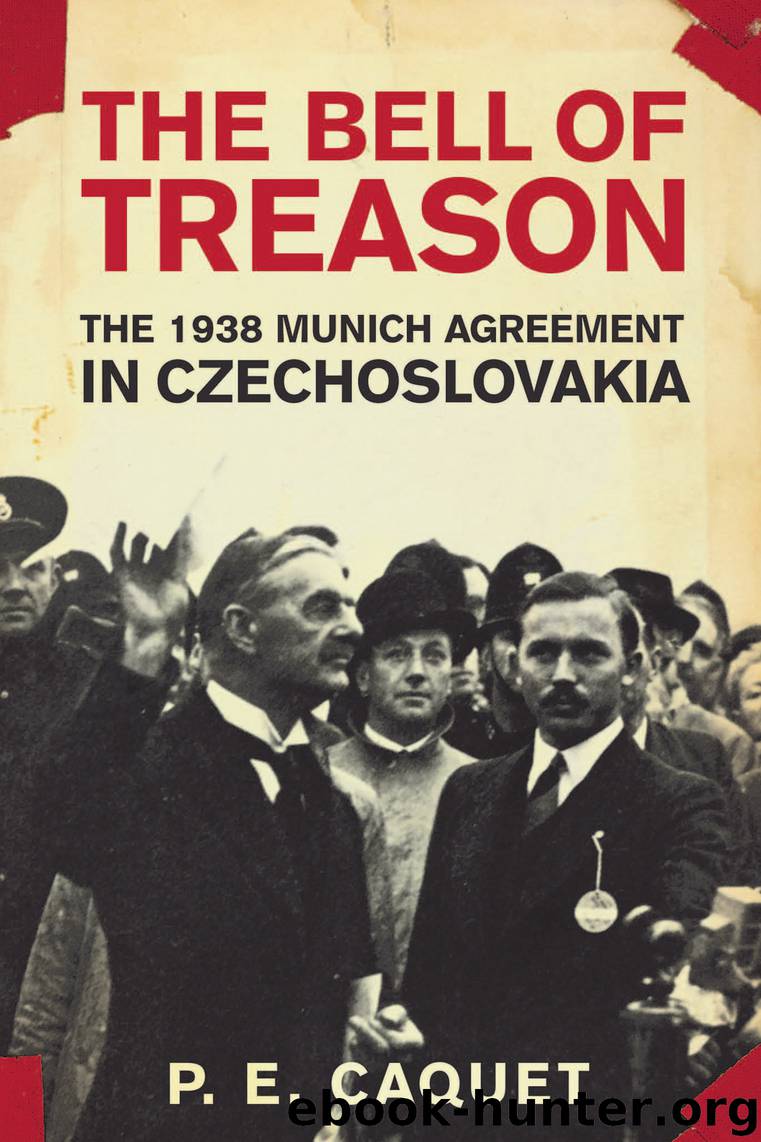The Bell of Treason by P. E. Caquet

Author:P. E. Caquet
Language: eng
Format: epub
Publisher: Other Press
Published: 2019-09-23T16:00:00+00:00
Table 6.1 Total army strength (divisions)32
Germany remained, in 1938, only halfway through its rearmament effort, and it was bumping against significant physical limits. The Versailles Treaty army limitation clauses had long cast their shadow over German military power. The treaty had restricted army size to a total of 100,000 men, of which 4,000 could be officers. It had stringently curtailed weapon and ammunition levels. Hitler had reintroduced conscription in 1935 and declared rearmament limitations null and void, and there had always been a degree of cheating. The Nazis had undertaken the army’s reconstruction under a breakneck system of mass mobilization geared toward war. Yet this took place in a context of a world economic crisis, with the attending foreign-exchange constraints on raw material imports. Germany sought to build a large air force at the same time, and the beginnings of a fleet. Factories and arsenals needed to be constructed, and weapons stockpiled. All this demanded time and imposed calculated choices. An even greater constraint was that modern warfare required trained officers, NCOs, and men. This was difficult and time-consuming to build from a base of a mere few thousand cadres. In 1938, Germany’s military remained far short of what its demographic and industrial potential allowed in the long run.33 Three years of rearmament (compared to five by 1940) did not suffice to close the gap.
The story of 1930s rearmament is too easily misconstrued if the fundamental difference is ignored that France, or indeed Czechoslovakia, faced no such limitations. (Britain, lacking conscription or a sizable standing army, was in yet another position.) Czechoslovakia possessed a world-class armaments industry that was a significant exporter.34 The Škoda works alone nearly matched in output the whole of the British armament industry.35 For France, rearming meant modernizing its stock of weapons, not building one from scratch or training multiple new classes of officers. A good share of stockpiles retained from the First World War—for example, field artillery and machine guns—remained perfectly serviceable.36 While the situation was different in the air force, where obsolescence rates were much higher, on land the French army possessed plentiful weapons, in many areas superior to their German equivalents. Neither the French nor the Czechoslovak armies faced any difficulty equipping all the units they could train.
The balance remained the same with army tallies narrowed down to what was strictly available for campaigns in Czechoslovakia and on a western front. France would be leaving some troops in its colonies and interior. Four German divisions were stuck in East Prussia. French fortress troops, most of which were assigned to the Ligne Maginot, could be counted out. Likewise, some German fortress troops were stationed in the east, where they would not be doing any fighting. Even then, the German land forces were significantly outnumbered before one considered any British, Polish, or Soviet help.
Download
This site does not store any files on its server. We only index and link to content provided by other sites. Please contact the content providers to delete copyright contents if any and email us, we'll remove relevant links or contents immediately.
| Africa | Americas |
| Arctic & Antarctica | Asia |
| Australia & Oceania | Europe |
| Middle East | Russia |
| United States | World |
| Ancient Civilizations | Military |
| Historical Study & Educational Resources |
Flight by Elephant(1482)
The Rise and Fall of the Third Reich: A History of Nazi Germany by William L. Shirer(1384)
Unbroken: A World War II Story of Survival, Resilience, and Redemption by Hillenbrand Laura(1102)
German submarine U-1105 'Black Panther' by Aaron Stephan Hamilton(1018)
Last Hope Island by Lynne Olson(936)
A Bridge Too Far by Cornelius Ryan(929)
The Victors - Eisenhower and His Boys The Men of World War II by Stephen E. Ambrose(904)
War by Unknown(904)
The Guns at Last Light: The War in Western Europe, 1944-1945 by Rick Atkinson(888)
Rogue Heroes: The History of the SAS, Britain's Secret Special Forces Unit That Sabotaged the Nazis and Changed the Nature of War by Ben Macintyre(884)
0060740124.(F4) by Robert W. Walker(872)
The Hitler Options: Alternate Decisions of World War II by Kenneth Macksey(865)
The Railway Man by Eric Lomax(847)
All the Gallant Men by Donald Stratton(815)
Hitler's Vikings by Jonathan Trigg(809)
A Tragedy of Democracy by Greg Robinson(800)
Churchill's Secret War by Madhusree Mukerjee(799)
Hitler's Armies by Chris McNab(782)
We Die Alone: A WWII Epic of Escape and Endurance by David Howarth & Stephen E. Ambrose(746)
